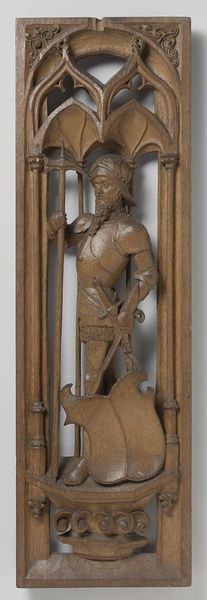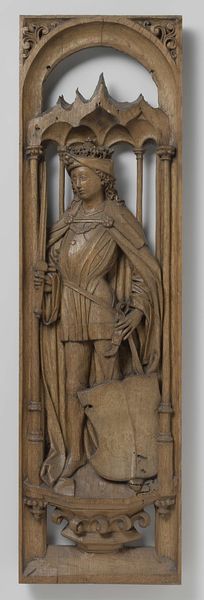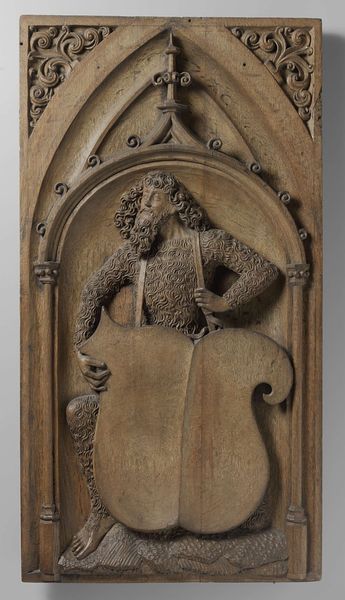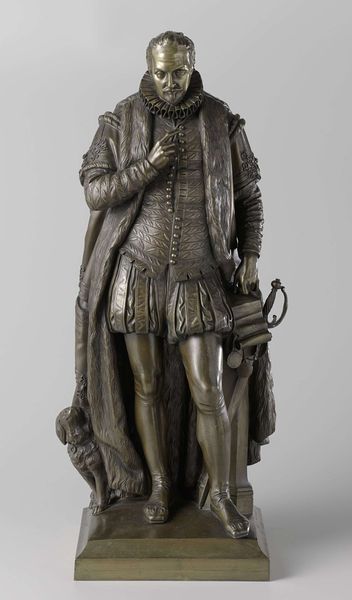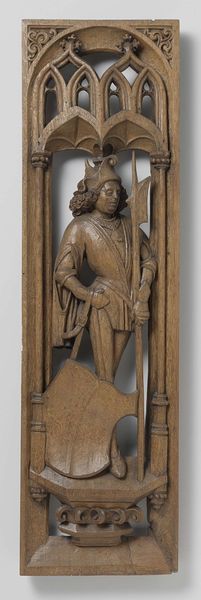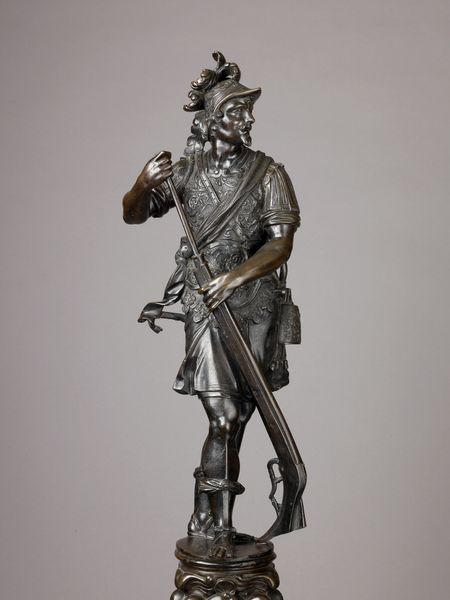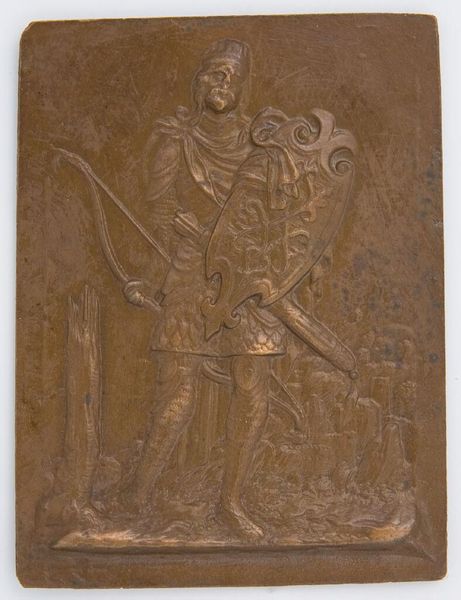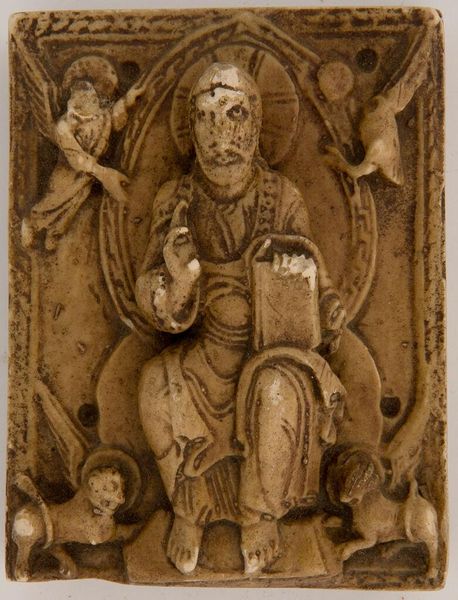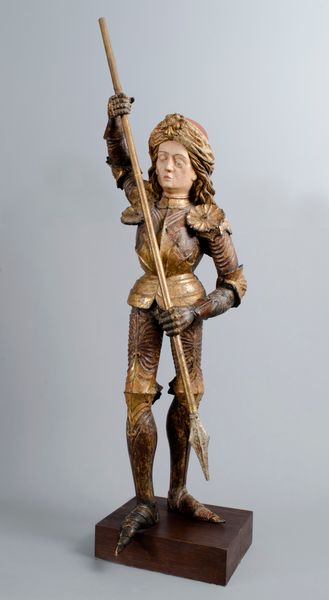
Panels from an organ case in the church of Saint Vitus in Naarden c. 1510 - 1520
0:00
0:00
carving, relief, sculpture, wood
#
medieval
#
carving
#
sculpture
#
relief
#
figuration
#
sculpture
#
wood
#
history-painting
Dimensions: height 84.8 cm, width 24 cm, depth 5 cm
Copyright: Rijks Museum: Open Domain
Editor: Here we have a panel from an organ case, created circa 1510-1520 by Jan van Schayck. It's a wooden carving featuring a knight in armor. The vertical composition and the ornate, gothic details above him create a sense of solemnity. How do you approach understanding a piece like this? Curator: Structurally, observe how the verticality isn't simply a byproduct of the panel format but a deliberate emphasis. The lines draw the eye upwards, highlighting the knight's figure but also confining his form. This use of linear design interacts with the rough, textural qualities of the wood itself. Consider the interplay between the smooth surfaces of the armor and the less refined treatment of the background and the base. What might this contrast suggest about the artist's intentions? Editor: That's a fascinating point. I hadn't considered how the surface treatment contributes to the overall feeling. Is it fair to assume that the relatively rough areas are of secondary importance, supporting the foreground, which is more worked upon? Curator: Precisely. Note also the geometric framework against which the knight is placed. The gothic arch above his head and the columnar structure surrounding him aren't merely decorative; they create a spatial relationship with the figure, almost as if imprisoning him in symbolic or visual space. Examine the pattern created. It’s echoed at his feet as well. Editor: It does seem that this choice boxes him into this world of order. Thank you for pointing out the interplay between geometry and texture. It's not something I immediately picked up on, but it enriches my understanding of how van Schayck communicates through form and material. Curator: It is crucial that when thinking about visual design and how these decisions contribute to meaning, the raw physicality of the material always offers critical evidence. This offers further perspective to how visual vocabulary influences an understanding of the world around us.
Comments
rijksmuseum about 2 years ago
⋮
These ten figures adorned the medieval organ in the church of Saint Vitus in Naarden. Each figure holds a weapon and a coat of arms on a strap. Some are dressed as knights with a breastplate and a helmet, others as princes or noblemen. They may represent the Counts of Holland. All the shields would have originally been painted.
Join the conversation
Join millions of artists and users on Artera today and experience the ultimate creative platform.
